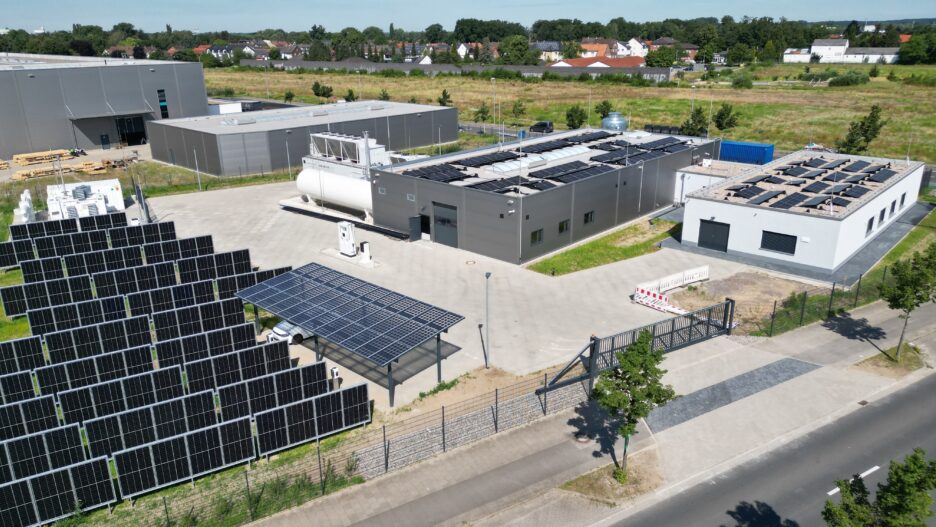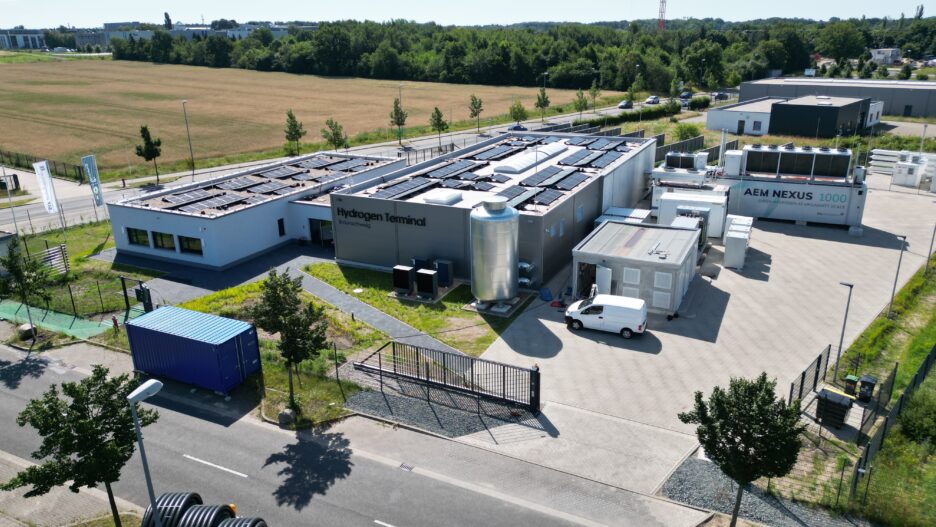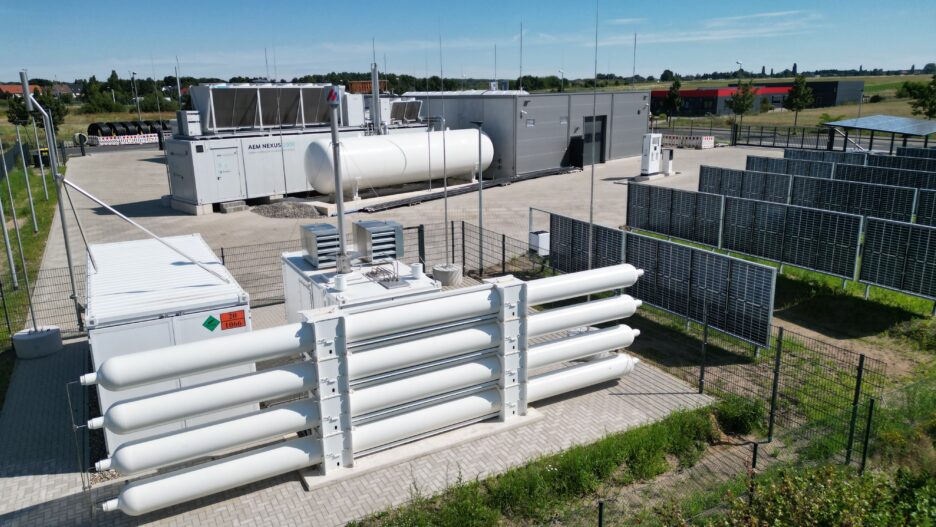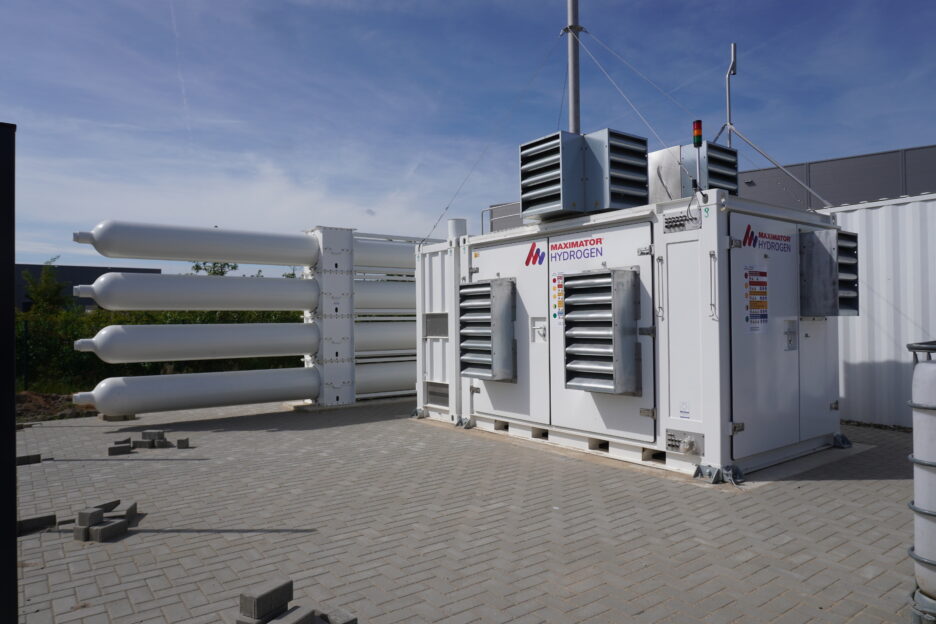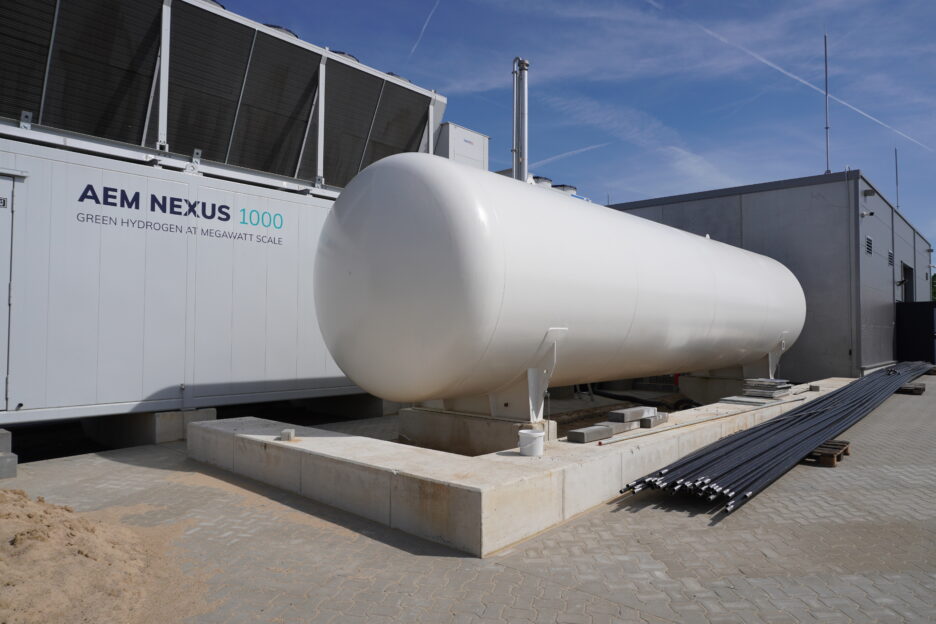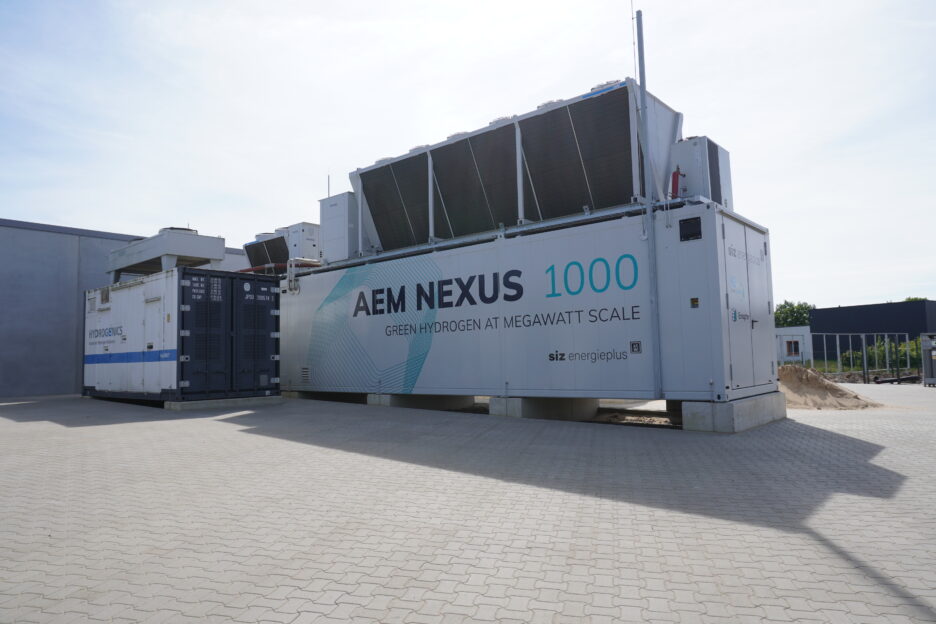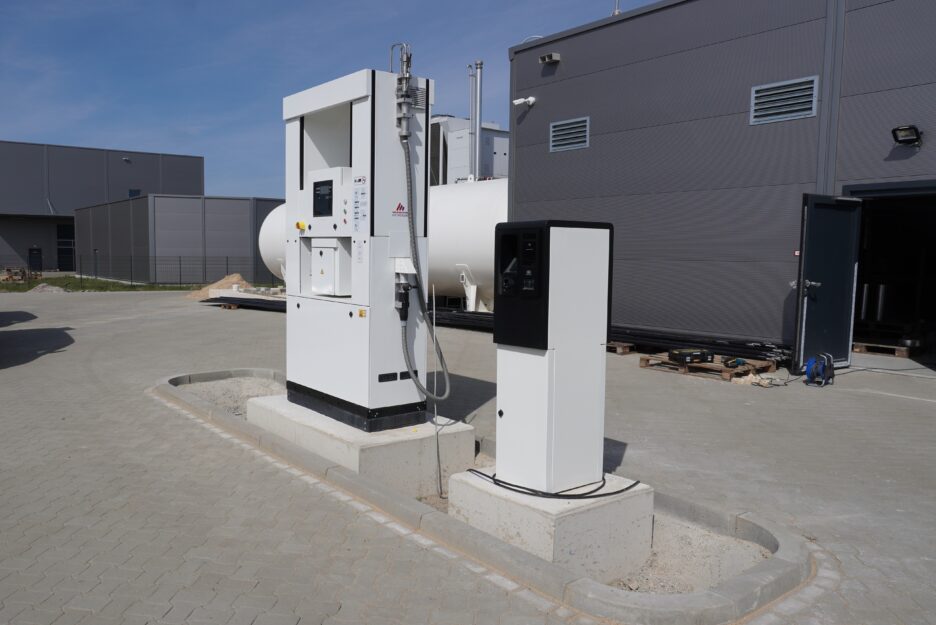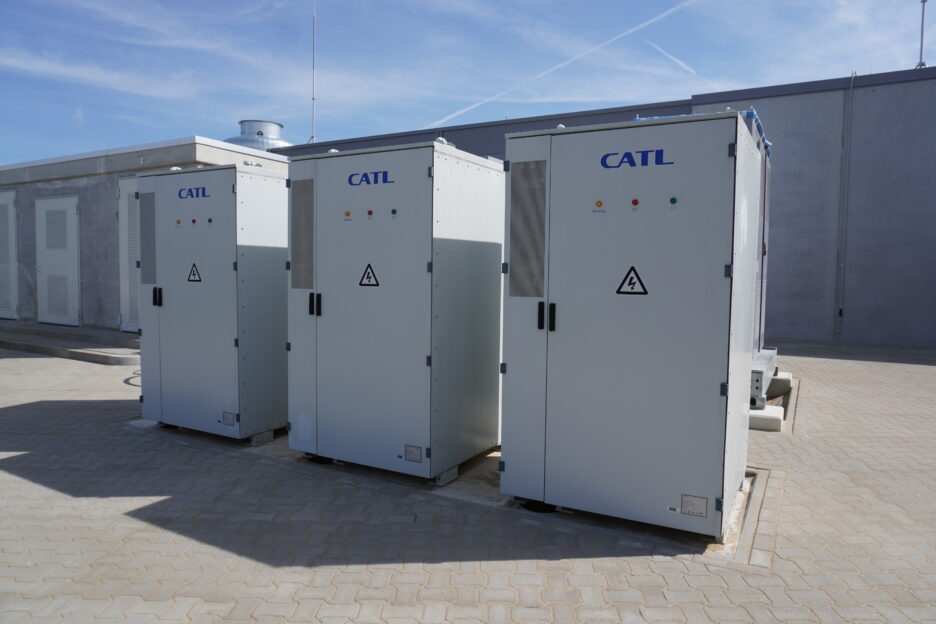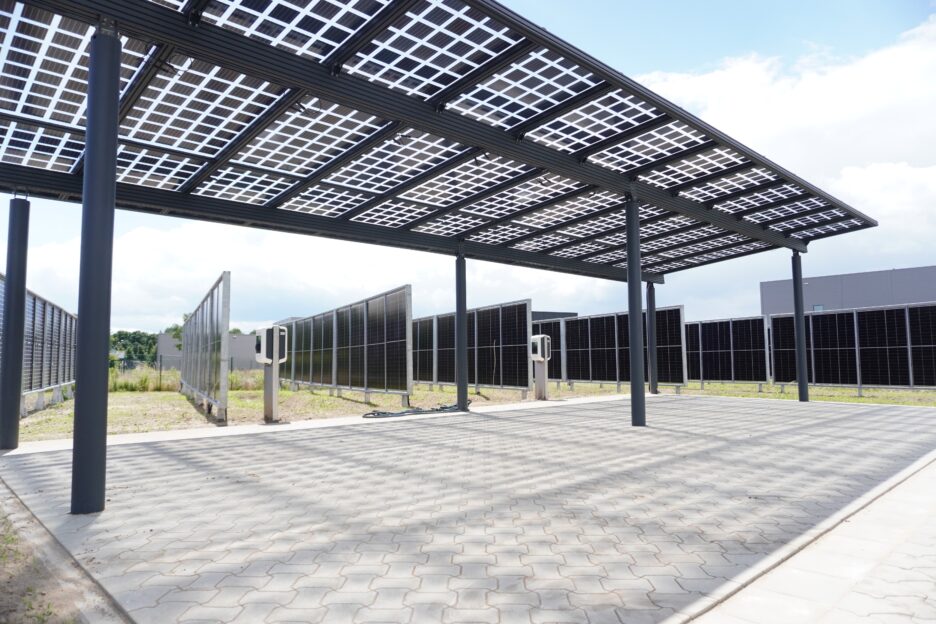H2-Terminal Braunschweig
Back to project overviewProject description
The transportation and storage of renewable energy remains the biggest challenge of the energy transition. One solution is emerging in connection with technologies related to hydrogen (H2) as an energy source. By building the Hydrogen Terminal Braunschweig, we are creating a location for pooling research expertise along the H2 value chain in the megawatt range. The research project is funded by the Federal Ministry of Education and Research (BMBF) with a total funding volume of over €20 million. The research project is being implemented as a joint project by the Steinbeis Innovation Center energieplus (siz energieplus) and the Technical University of Braunschweig (TU Braunschweig). The TU Braunschweig is participating with seven research institutes and the building management division.
The research laboratory will be built on the approximately 4,700 m² site (the size of a small soccer pitch) in Gerhard-Borchers-Straße in Braunschweig as a demonstrator of a future energy center in the megawatt range. Hydrogen will be produced from renewable energies using electrolysis, then stored and transported regionally by truck or locally via a hydrogen pipeline.
The heart of the project is the AEM multicore electrolyzer from Enapter with a power class of 1 megawatt, which is the world's first prototype to bring AEM technology (Anion Exchange Membrane, AEM) to Braunschweig. In addition, a high-temperature electrolyzer (Solid Oxide Electrolysis Cell, SOEC) will be used on the site to produce hydrogen from water vapour. In addition to the electrolysers located outside the building, electrolysis test rigs covering alkaline electrolysis and PEM electrolysis (Protone Exchange Membrane, PEM) will be set up in the research building. With the four electrolysis technologies, the essential range of existing production approaches for green hydrogen is represented for direct comparison within the H2 terminal. As part of the project, research is being carried out to increase the efficiency of all generation technologies. In addition, the research project will investigate the production of hydrogen through
(co-)pyrolysis of hydrocarbonaceous feedstocks is being tested and further developed.
The green hydrogen produced with renewable electricity from the electrolysers is used in various ways. On the one hand, it is used in internal test benches to carry out ageing tests with different hydrogen qualities. On the other hand, other external (fuel cell) test benches at the Fraunhofer Project Center for Energy Storage and Systems (Fraunhofer ZESS) and the Lower Saxony Research Center for Automotive Engineering (NFF) are supplied with the green hydrogen via pipeline.
Parallel to the supply of hydrogen, the Fraunhofer ZESS is supplied with processed electrolysis waste heat. For this purpose, the temperature level of the waste heat from the electrolysis processes is raised using a high-temperature heat pump and made available via a local heating network. In addition to the use of the hydrogen in the test benches, it is also used on the NFF site to test hydrogen storage in the world's largest metal hydride storage facility currently operated by GKN Hydrogen.
At the H2 Terminal site, the hydrogen produced will be used not only in test benches but also to operate a hydrogen filling station from the manufacturer Maximator. At this station, heavy-duty vehicles can be refueled with green hydrogen at a pressure level of 350 bar.
The project is also investigating how the electrolysers and fuel cells can be used in conjunction with a large battery storage system (storage capacity 1.1 megawatt hours) and the solar system (installed capacity 150 kilowatts) to stabilize the grid when conventional fossil fuel power plants are no longer available.
The main areas of research at siz energieplus and the TU Braunschweig's joint partner are as follows:
- Steinbeis Innovation Center energieplus - siz: decoupling, processing and distribution of electrolysis waste heat, H2 logistics, increasing the efficiency of electrolysis, further development of (co-)pyrolysis of hydrocarbon-containing starting materials for H2 production
- Institute of High Voltage Technology and Energy Systems - elenia: Grid and system integration of electrolysers and other components
- Institute for Building Climatology and Energy of Architecture - IBEA: Climate neutrality and energy integration
- Institute of Energy and Systems Process Engineering - InES: Dynamic simulation of electrolysers
- Institute for Urban Planning and Design Methodology - ISE: Adaptation of the Campus Development Master Plan
- Institute of Technical Chemistry - ITC: Aging diagnostics of electrolyzers
- Institute for Internal Combustion Engines and Fuel Cells - ivb: Fuel cell systems and drives
- Institute for Machine Tools and Production Engineering - iWF: Overall system modeling and holistic evaluation
Philipp Regenbogen 0531 793893-56
Julia Gottsmann 0531 793893-60
Max Ebert 0531 793893-62
WP1: Basic evaluation / preliminary design
- Basic determination
- Determination of location
- Preliminary design of the components
- Coordination with the approval authorities and the energy supply company
WP2: Establishment of competence center
- Determination of the development
- Foundation
- Construction of peripherals for laboratories and components
WP3: Construction of test benches
- Coordination with the research partners
- Construction of fuel cell test stand
- Construction of electrolyzer test bench
- Construction of battery test bench
- Training of specialists
WP4: Construction of research environment
- Coordination with the research partners
- Construction of electrolyzers
- Construction of storage units
- Construction and installation of workshop
- Test environment for gas and heat feed-in
WP5: Research operation
- Commissioning of the components
- Research work of the partners
- Research work on electrolysers
- Research work on heat extraction
- Research work on feed-in
- H2 logistics research
WP6: Monitoring and optimization


